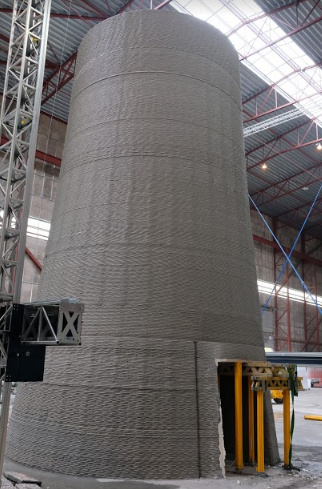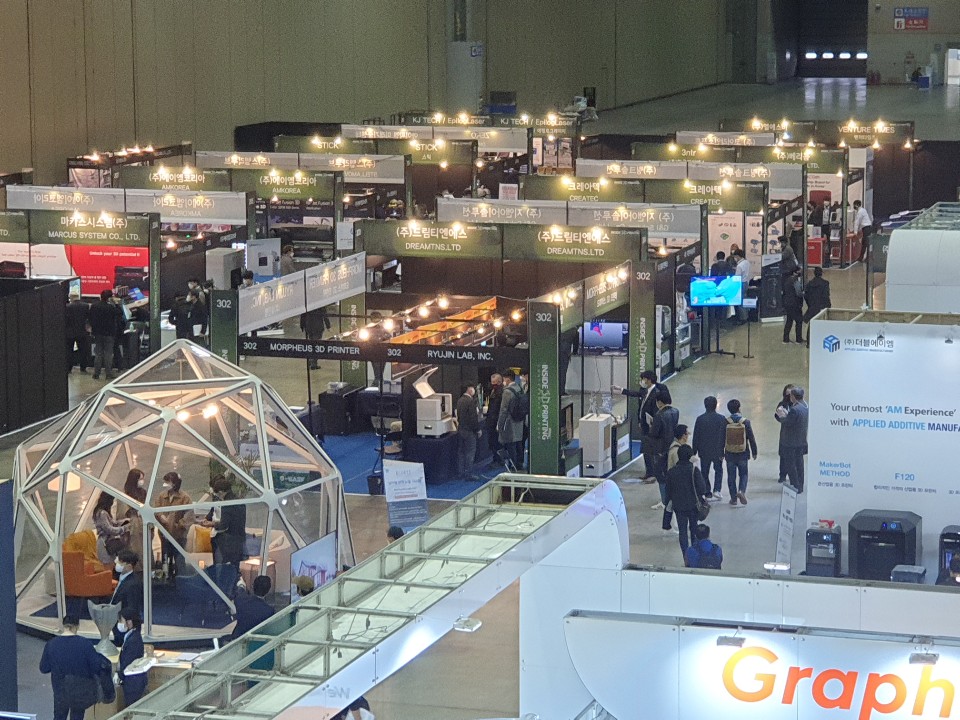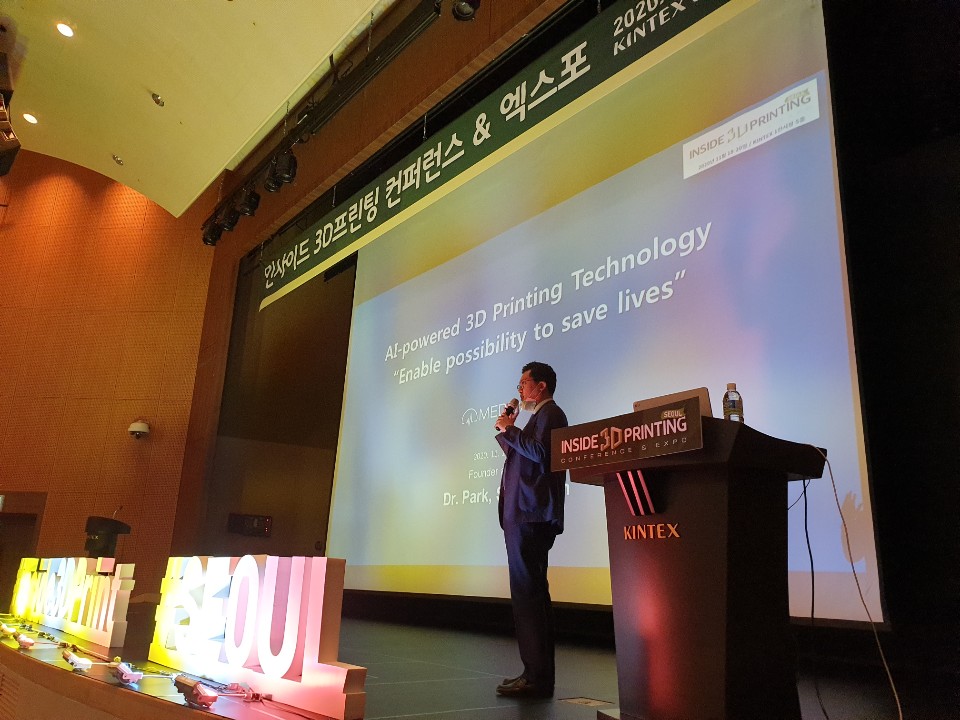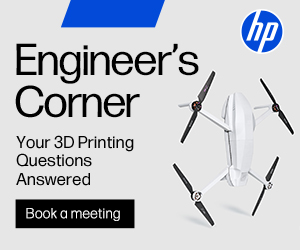2020’s Inside 3D Printing Seoul Online-Offline Conference: What Was it Like?
When the SARS-CoV-2 virus hit early this year, few of us could guess the scope and scale of the resulting pandemic, and how it would disrupt every aspect of daily life. While these disruptions have varied from nation to nation, they have affected all of us, and no one has been able to escape the virus’s effects. These disruptions are no more apparent than in international business, including the 3D printing community.
Though Korea was very early to act against the virus, and has extensively brought the virus under control within its borders, no one has been spared its impact. This includes this year’s Inside 3D Printing Seoul show, which had to be conducted as a hybrid experience. Done out of necessity, the show was held partially in person and partially online, both to protect the Korean people and due to the incredible difficulty of travel for many of the speakers who had been scheduled to speak. Truth be told, it was pretty amazing that the show was able to be held at all, so hats off to the organizers.
That said, I attended from Busan and was not able to make the trip up to Seoul to see the goings-on in person. So, I reached out to a few good friends who were able to be there in person. They gave a very good account of the action on the ground there, and, universally, they all noted the diminished size of the event. It seems that, while the pandemic played no small roll in this, the opinions (including my own) were that the zeal for the show has been gradually declining over the past few years.
The general opinion seems to be that the Inside 3D Printing show is geared more to the desktop/services/maker market, which is not as prominent in Korea as in other areas of the world. From the beginning, most Koreans were just not interested in desktop printing. Where 3D printing is popular in Korea is in industry. This explains the rise of more industrial themed shows, such as the “3D Printing Gala” in Ulsan, the TCT Shows in Changwon, and the recent “Smart Factory” show in Busan—ironically held on the same days as the Inside 3D show this year. I was able to speak to William Joo, Chairman of the Korean Additive Manufacturing User’s Group (K-AMUG). He confirmed a lot of what I had been hearing and filled me in on a few of the latest developments in the exhibition world—especially the preference of industrial members for a more exclusive industrial manufacturing-only type of forum, which would have a broader topic base than just 3D printing.
So, what did happen at Inside 3D Printing Seoul this year and how was it conducted? Well, the three-day event was broken into various parts with the first day reserved for the Korean industry leaders’ presentations to speak in person. People such as Hye Young Hwang of Applied Additive Manufacturing (AAM) a Korean partner of Stratasys; Kuk-Hyun Han of Samyoung Machinery Co., Ltd.; Heungkee Kim of Stratasys; Jackie Kim of Formlabs; Sang Joon Park of Medical IP; Seungkyun(Chris) Kim of EOS; Shinhu Cho of Hyundai Motor Group; and Simon Lee of AM Ventures.
While I was not able to attend any of their presentations, I did review their power-points and they all spoke on, you guessed it, the industrialization of 3D printing. I did get a chance to chat with Simon Lee though, and he told me that, in his opinion, “the current AM industry demands more and more collaboration between the market players in order to offer rather ‘solution-oriented’ value chains per each respective verticals with different requirements.” He also said of his industry that, “as an investor in this particular field, (we) believe the roll of the startup is critical, and, to accelerate their potential to be realized and eventually grow the overall industry, the role of the AM investor will be also quite critical in this ecosystem.”
The second day was an online conference reserved for the international speakers who could not attend in person. This was done by a series of prepared presentations, most of which were in English with Korean subtitles. This group consisted of fifteen speakers that covered a wide range of topics, from shipping supply chains to emergency medical applications. While all the speakers were very good, I did have a few favorites, notably Blake Teipel of Essentium; Julien Cohen of 3DEO; and Henrik Lund-Nielsen of COBOD.
Essentium started as a materials company, but brought their new high speed FDM machines to the show. Mr. Teipel’s talk explained the details of their new machines and how they were designed to fit the gap of small-scale manufacturing—the gap between mass production on the one end and individual customization on the other. Essentium’s High Speed Extrusion (HSE) machines are best suited to low-scale manufacturing, say, between 100 and 1,000 units. And, while I was not able to see their machines in person, my most trusted engineer friend, Kang JiHuhn of Former’s Farm, was, and he was extremely impressed with its design. He said, “that printer is the best I have ever seen.” He also added that, in his personal opinion, it had, “better technics in the printer than the F series from Stratasys.” You can be sure I will be picking his brain on this topic more in the near future.
COBOD is a printer manufacturing company based out of the EU that specializes in big printers—really big. Their BOD 2 is specifically designed to print buildings, houses, and other large objects. One recent project that. Lund-Nielsen, the company founder and the show’s presenter, highlighted was the fabrication of a wind power mast they have been working on. In his talk, he pointed out several of the misleading ideas in common circulation about construction printers, and spoke about actual solutions tot he problems associated with large-scale projects. His reality-based talk was very refreshing, considering the amount of hype the the construction sector has endured over the past few years.

A 3D printed concrete wind turbine base made using the BOD 2 3D printer for GE. Image courtesy of COBOD.
3DEO is a different kind of firm, a service company rather than a hardware provider. Julien Cohen, one the company’s application engineers, explained that, through their business, a manufacturer can submit a design, and have that design printed in stainless steel, post processed, and then have the finished parts shipped to them for final assembly into that manufacturer’s finished product(s). And with 3DEO’s ‘intelligent layering system’ that combines binder jetting, and milling—prior to final sintering—3DEO is able to supply parts with the highest dimensional accuracy and surface finish in the industry. There are some restrictions though, in that the process is really only best for parts smaller than a tennis ball and they currently only offer a single stainless steel build material, though that could change soon.
Though this year’s setup was far from ideal, it did still work and provided valuable opportunities to share knowledge and make connections with others in our industry—some of whom were new, and some we may not have been aware of. Life in this pandemic has net been easy for anyone, but it will surely end, and, when it does business, as well as our conventions and shows, and our entire industry can get back to what we all do best.
Subscribe to Our Email Newsletter
Stay up-to-date on all the latest news from the 3D printing industry and receive information and offers from third party vendors.
Print Services
Upload your 3D Models and get them printed quickly and efficiently.
You May Also Like
3D Printing Financials: Stratasys Kicks Off 2025 with Fresh Cash and a Tight Grip on Strategy
Stratasys (Nasdaq: SSYS) started the year with strong momentum, adding fresh cash to its balance sheet and achieving profitability on an adjusted basis. The company also gained a new investor,...
Chaos & Opportunity
Great fortunes are lost and won amidst quicksand. When well-trodden paths turn to labyrinths, the concrete is sublimated into morass, sunshine turns to hail, and 20/20 vision becomes blindness; new...
3D Printing Financials: Xometry Cuts Losses, Grows Platform
Xometry (Nasdaq: XMTR) is entering 2025 with momentum. The company delivered record quarterly revenue and narrowed its losses, showing progress toward profitability. More importantly, for those watching the future of...
3D Spark Secures $2.2M to Tackle Manufacturing Bottlenecks
German startup 3D Spark has raised two million euros in a seed round. Swedish software investor Triplefair Partners led the round, with Fraunhofer Technologie-Transfer Fonds (FTTF) and Innovationsstarter Fonds Hamburg...


































